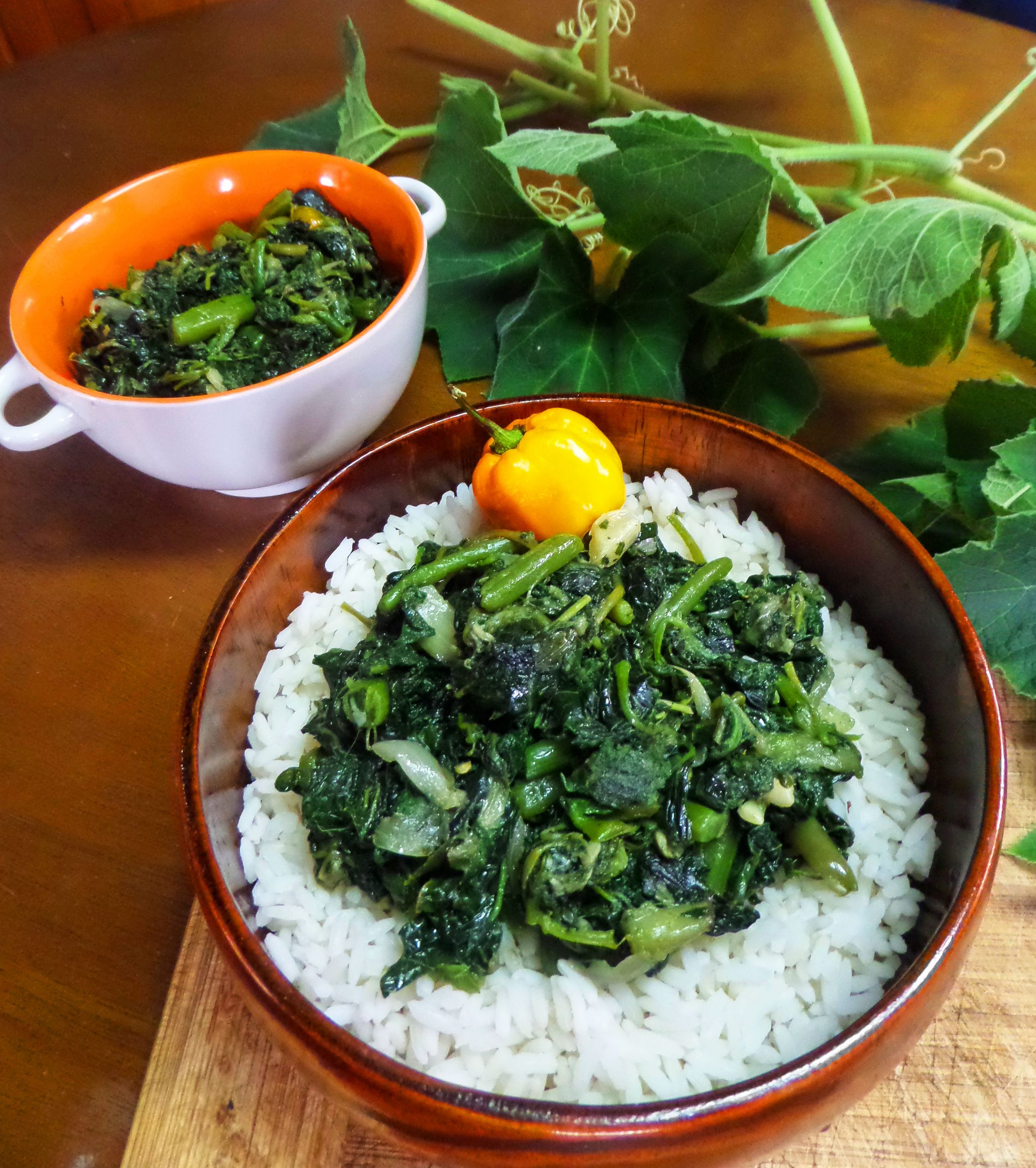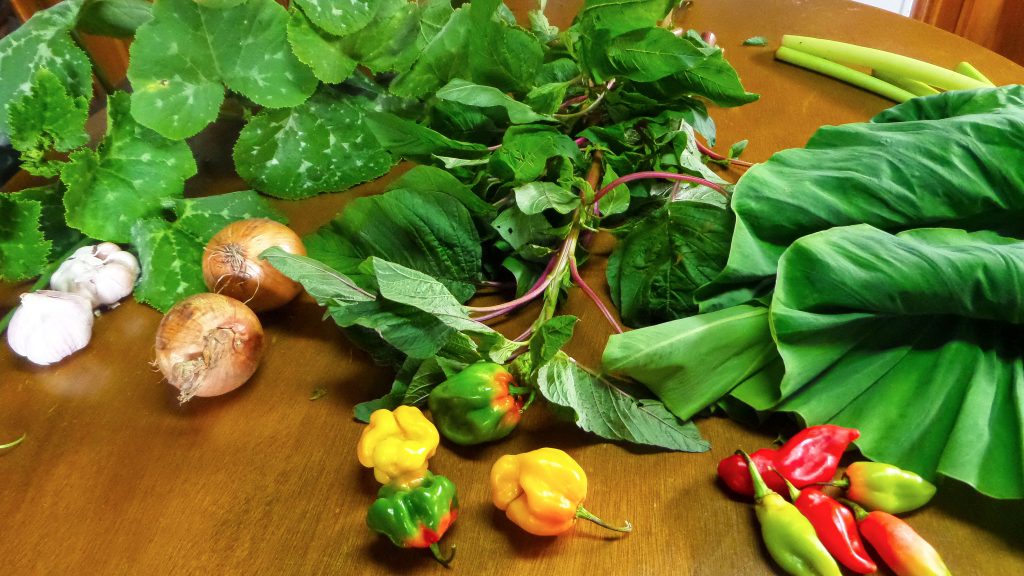
Long time Sancoche Bhagee Recipe
Sancoche Bhagee is more than a dish, it’s a melting pot. Today when we hear “bhagee” we think of dasheen bush and little else. But Peter Pariag who wrote about East Indian cuisine back in 1975 described bhagee as consisting “pakchoi, mustard leaves, poi leaves, dasheen leaves, young sweet potato leaves, young cassava leaves, young pumpkin leaves” and more! Yet such a lush blending of various vegetables was not born from richness, but resourcefulness.
Necessity is often the mother of innovation and so the mothers and housewives of the humble barracks of old Trinidad would forage together whatever was available to feed their families. While some may look at bhagee as particularly unremarkable, like many Caribbean meals, it is steeped in the trials of our colonial past. It demonstrates the enormous ingenuity of Caribbean people who quite literally had to make the most out of the little they had. At some point they must’ve recalled the word sancoche, the name of a soup made from various vegetables and ground provisions and associated its meaning with “consisting a variety or plethora of ingredients”. This makes the name sancoche bhagee a misnomer since sancoche actually comes from Spanish sancochar – ‘to parboil’ and has nothing to do with a mixture or variety.

The recipe here is for a simplified Sancoche Bhagee using only three different leaves: dasheen leaves, pumpkin leaves and spinach. Dasheen Bush, also called Taro leaves, are common across Trinidad and Tobago for making bhagee, callaloo, saheena etc. They are an excellent source of dietary nitrates that help maintain healthy blood pressure and are high in fiber.
Local Spinach, usually of the variety amaranthus which is more rugged than imported varieties and may be identified by the occasional splash of purple on their leaves (National Herbarium of Trinidad and Tobago). These are high in antioxidants that boost eye health and micronutrients like manganese and magnesium.
Pumpkin Leaves, these are more commonly eaten in Africa and Asia and are a delicacy in Italy. Pumpkin leaves are abundant with iron to boost your immune system and potassium for a healthy heart rate.
Ingredients
- 5 cups of dasheen bush (chopped)
- 10 cups of spinach (chopped)
- 5 cups of pumpkin leaves (chopped) Young leaves are preferable since you will have to de-string the tough fibres from the stems of more mature leaves.
- 8-10 garlic cloves (minced)
- 1 medium onion (chopped)
- 2 tbsp oil
- Hot peppers and salt to taste
Directions
- Heat the oil on medium heat
- Sauté the garlic and onions with salt and peppers.
- Add all the chopped leaves and mix together so the oil distributes evenly.
- Cover and cook on low to medium heat until soft.
- The leaves should produce a lot of water so cook until most has evaporated. However, if you suspect it is too dry you can add a little water.
- Serve with roti or white rice.
